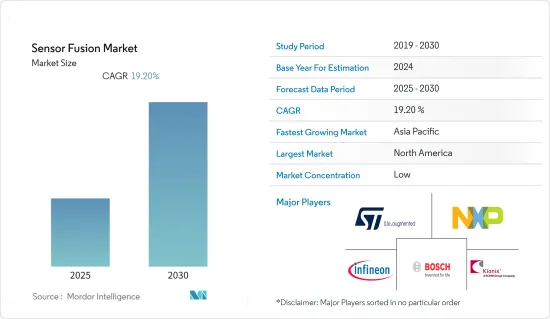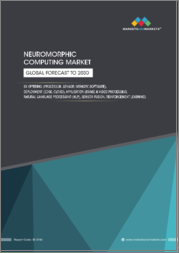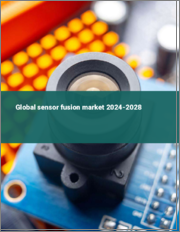
|
시장보고서
상품코드
1630225
센서 융합 : 시장 점유율 분석, 산업 동향 및 통계, 성장 예측(2025-2030년)Sensor Fusion - Market Share Analysis, Industry Trends & Statistics, Growth Forecasts (2025 - 2030) |
||||||
센서 융합 시장은 예측 기간 동안 CAGR 19.2%를 기록할 것으로 예상됩니다.

주요 하이라이트
- 센서 간 불일치 해결, 센서 동기화, 물체의 미래 위치 예측, 자율주행의 안전 요구 사항 달성은 자율주행 자동차 애플리케이션에서 센서 융합의 주요 목적 중 일부입니다. 자동차의 자율주행 기능의 통합이 증가함에 따라 예측 기간 동안 조사 대상 시장의 성장을 촉진할 것으로 예상됩니다.
- 세계경제포럼(WEF)에 따르면, 2035년까지 연간 1,200만 대 이상의 완전 자율주행차가 판매될 것으로 예상되며, 자율주행차는 전 세계 자동차 시장의 25%를 차지할 것으로 전망되고 있습니다. 또한, 인텔에 따르면 자율주행차 1대는 하루 평균 4테라바이트의 데이터를 생성한다고 합니다. 따라서 센서 융합 솔루션은 이 방대한 데이터를 실시간으로 활용하는 데 중요한 역할을 할 수 있습니다.
- 또한 전 세계의 엄격한 정부 규제도 연구 시장 제품에 대한 수요를 촉진하고 있습니다. 예를 들어, 유럽에서는 유로 NCAP(유럽 신차 평가 프로그램)에서 최소 한 가지 이상의 운전 보조 시스템 도입을 의무화하고 있습니다. 일본과 미국 같은 국가들도 국내 NCAP 규정에서 유사한 기준을 채택하고 있습니다.
- 또한, 5G 기술의 채택이 확대됨에 따라 센서 융합의 범위는 대형 상용차, 드론 및 산업용 로봇과 같은 자율주행 차량으로 더욱 확대되고 있으며, 5G는 자동차 및 운송 산업에 V2X(Vehicle-to-everything) 기술을 가져오고, MaaS(Mobility-as-a-Service) 시장의 성장으로 인해 센서 융합의 수요를 증가시킬 것입니다. Mobility-as-a-Service), 스마트 버스, 로보택시 등의 시장 성장으로 센서 융합에 대한 수요를 증가시킵니다.
- 많은 자동차 제조업체들도 주로 경쟁 우위를 활용하기 위해 센서 융합 개발 프로그램에 착수하고 있습니다. 예를 들어, 2022년 5월, 유연하고 견고하며 정확한 ADAS 및 AD 센싱 기술을 제공하는 LeddarTech는 텔아비브에 LeddarTech의 센서 융합 및 인식 개발 센터를 개설했습니다.
- 그러나 표준화는 센서 융합 시스템의 진화를 가로막는 큰 요인 중 하나이며, 특정 세계 표준이 존재하지 않는 것은 이 기술의 추가 발전과 대량 채택을 크게 방해하고 있습니다.
- COVID-19로 인한 세계 자동차 부문의 최근 경기 침체는 조사 시장의 수요에 영향을 미쳤을 뿐만 아니라, 팬데믹의 후유증을 고려할 때 중기적으로 채택률에 영향을 미칠 수 있습니다. 그러나 장기적으로는 전기자동차와 자율주행차의 성장이 시장 성장을 뒷받침할 것으로 보입니다.
센서 융합 시장 동향
자동차 부문의 기술 동향 증가로 시장 성장 촉진
- ADAS의 발전과 GPS-IMU(관성측정장치) 융합 원리의 활용 증가는 절대 위치 측정값과의 간격에서 추측 항법의 누적 오차를 해결하는 데 도움이 되고 있습니다. 테슬라의 자동 운전 기능인 '오토파일럿'은 ADAS의 일례로, 전방 카메라를 통해 수집한 데이터로 차량의 정확한 위치를 파악해 조향을 제어함으로써 고속도로 차선에서 차량의 중심을 유지하는 등의 기능을 수행할 수 있습니다.
- 적응형 크루즈 컨트롤(ACC), 자동 긴급 제동(AEB), 전방 충돌 경고(FCW)는 조사 대상 시장에서 가장 주목받고 있는 응용 분야 중 일부입니다. 예를 들어, 2022년 주요 자동차 제조업체인 혼다는 인도 시장에서 능동적 및 수동적 안전 기능으로 구성된 혼다 센싱 테크가 탑재된 시티 하이브리드를 출시할 계획을 발표했습니다. 회사 측에 따르면, 긴급 제동, 어댑티브 크루즈 컨트롤, 차선 이탈 경고 시스템, 차선 이탈 경고 시스템, 차선 유지 보조, 전방 충돌 경고 시스템 등의 기능도 탑재될 것이라고 합니다.
- 전기자동차에 대한 수요 증가는 또한 더 많은 센서와 첨단 기능을 갖춘 자동차가 더 많은 센서와 첨단 기능을 갖추고 있기 때문에 조사 대상 시장의 성장에 유리하며, IEA의 추정에 따르면 2022년에 판매되는 신차의 약 13%가 전기자동차가 될 것으로 예상됩니다. 또한 ACEA가 제공 한 데이터에 따르면 유럽에서 배터리 전기자동차의 분기별 판매량은 2022년 1분기에 약 562,280 대, 2분기에 약 562,270 대를 기록했습니다.
- 또한, 5G의 출현은 자동차 산업의 게임 체인저가 될 것으로 예상되며, 5G가 제공하는 고속 연결성과 높은 커버리지 밀도는 자율주행차의 성장을 가속화하고 조사 대상 시장의 성장에 유리한 시나리오를 만들어 낼 것으로 보입니다.
아시아태평양이 괄목할 만한 성장을 이룰 것으로 예상
- 아시아태평양은 자율주행 애플리케이션에서 센서 융합의 주요 지역 중 하나입니다. 이는 자율주행 자동차의 채택 증가, 엄격한 정부 규제, 세계 반도체 산업에서의 우위성 증가에 기인합니다. 또한 이 지역은 C-V2X의 추진과 함께 5G에 대한 대규모 투자를 통해 자율주행, V2X(Vehicle-to-Everything), MaaS 시장과 같은 자동차 애플리케이션의 범위를 더욱 확장하고 있습니다.
- 중국은 세계 최대의 자동차 제조 기지 중 하나입니다. 이 지역의 경제 성장은 승용차 및 상용차 판매에 영향을 미치고 있습니다. 예를 들어, 중국자동차공업협회(CAAM)에 따르면 2022년 4월 중국에서 생산된 승용차는 약 99만 6,000대, 상용차는 약 21만 대에 달합니다.
- 중국은 또한 전기자동차와 자율주행차 개발 및 도입에서도 세계를 선도하고 있습니다. 예를 들어, 2022년 12월 중국 자동차 제조업체인 바이두와 토요타 자동차가 지원하는 스타트업 포니닷에이아이(Pony.ai)는 베이징에서 완전 자율주행 자동차를 테스트할 수 있는 첫 번째 라이선스를 획득했다고 발표했습니다.
- 지방 정부도 시장 개척에 큰 역할을 하고 있습니다. 예를 들어, 인도 연방 도로교통부 장관은 2022년까지 모든 자동차에 ADAS를 의무화할 계획이라고 발표했습니다. 이미 여러 자동차 제조업체들이 ADAS 장착 차량을 출시하기 시작했습니다. 예를 들어, MG Motor India는 2023년 1월 ADAS 기술을 탑재한 차세대 SUV 'Hector'를 발표했습니다. 회사 측에 따르면, 이 SUV에는 트래픽 잼 어시스트(TJA), 자동 회전 표시기 등의 기능도 탑재될 것이라고 합니다. 이러한 추세는 아시아태평양의 연구 시장 성장에 유리한 시나리오를 만들어내고 있습니다.
센서 융합 산업 개요
센서 융합 시장은 세분화되어 있습니다. 여러 업체가 진입하는 경쟁이 치열한 시장이며, 지배적인 진입 업체는 존재하지 않습니다. 그러나 기술 혁신과 개발을 통해 많은 기업들이 신흥 시장을 개척하고 시장에서의 입지를 강화하고 있습니다. 주요 시장 진입 기업으로는 Robert Bosch GmbH, Infineon Technologies AG, NXP Semiconductor, STMicroelectronics NV 등이 있습니다.
- 2023년 1월 - 자동차 부품 공급업체 ZF가 차세대 카메라 '스마트 카메라 6'를 발표했습니다. 이 차세대 카메라는 이미지 처리 모듈(IPM)을 통해 다양한 센서 데이터를 통합하여 상세한 3D 전방위 차량 뷰와 복잡한 교통 상황을 인식하고 관리할 수 있습니다. 이 기술은 자율주행 및 안전 시스템 개발에 있어 중요한 빌딩 블록이 될 것이라는 게 회사 측의 설명입니다.
- 2022년 11월 - STMicro는 AI와 센서 융합 기능을 통합한 최신 6축 IMU를 발표했습니다. 웨어러블, AR/VR 등 저전력 센싱 애플리케이션을 위한 센서 융합 블록과 머신러닝(ML) 코어를 포함하고 있습니다.
기타 혜택
- 엑셀 형식의 시장 예측(ME) 시트
- 3개월간의 애널리스트 지원
목차
제1장 소개
- 조사 가정과 시장 정의
- 조사 범위
제2장 조사 방법
제3장 주요 요약
제4장 시장 인사이트
- 시장 개요
- 산업의 매력 - Porter's Five Forces 분석
- 공급 기업의 교섭력
- 구매자/소비자의 협상력
- 신규 참여업체의 위협
- 대체품의 위협
- 경쟁 기업 간의 경쟁 관계
- 산업 밸류체인 분석
- 기술 현황
- COVID-19의 시장에 대한 영향
제5장 시장 역학
- 시장 성장 촉진요인
- 카일렉트로닉스의 소형화 수요 증가
- ADAS 시스템과 자율주행차에 대한 수요 증가
- 시장 성장 억제요인
- 센서 융합 시스템의 표준화의 결여
제6장 주요 시장 동향
- 주요 특허와 조사 활동
- 주요 용도와 신흥 용도
- 어댑티브 크루즈 컨트롤(ACC)
- 자동긴급제동(AEB)
- 옆미끄러짐 방지 장치(ESC)
- 전방충돌경고(FCW)
- 기타
제7장 시장 세분화
- 차종별
- 승용차
- 소형 상용차(LCV)
- 대형 상용차(HCV)
- 기타 자율주행차
- 지역별
- 북미
- 유럽
- 아시아태평양
- 라틴아메리카
- 중동 및 아프리카
제8장 경쟁 구도
- 기업 개요
- Robert Bosch GmbH
- Continental AG
- Infineon Technologies AG
- BASELABS GmbH
- NXP Semiconductor
- BASELABS GmbH
- STMicroelectronics NV
- Memsic Inc
- Kionix Inc(Rohm Semiconductor)
- TDK Corporation
- CEVA Inc
제9장 투자 분석
제10장 시장 기회와 향후 동향
ksm 25.01.23The Sensor Fusion Market is expected to register a CAGR of 19.2% during the forecast period.

Key Highlights
- Resolving contradictions between sensors, synchronizing sensors, predicting the future positions of objects, and achieving automated driving safety requirements are some of the primary objectives of sensor fusion in an autonomous vehicle application. The growing integration of autonomous features in automobiles is expected to drive the growth of the studied market during the forecast period.
- According to the World Economic Forum (WEF), more than 12 million fully autonomous cars are expected to be sold annually by 2035, and autonomous vehicles will account for 25% of the global automotive market. Furthermore, according to Intel, a single autonomous vehicle can generate an average of 4 terabytes of data per day. Hence, sensor fusion solutions can play a significant role in utilizing this massive data in real time.
- Stringent government regulations across the globe are also fuelling the demand for the studied market products. For instance, in Europe, Euro NCAP (European New Car Assessment Program) mandates the deployment of at least one driver assistance system. Countries like Japan and the United States are also adopting similar criteria in their national NCAP rules.
- Furthermore, The rising adoption of 5G technology is further expanding the scope of sensor fusion towards heavy commercial vehicles and autonomous vehicles like drones and industrial robots. 5G will massively bring Vehicle-to-everything (V2X) technology to the automotive and transportation industry, increasing the demand for sensor fusion due to growth in the markets Mobility-as-a-Service (MaaS), smart bus, and robot taxis, among others.
- Many automotive manufacturers are also initiating sensor fusion development programs, mainly to leverage competitive advantage. For instance, in May 2022, LeddarTech, a provider of flexible, robust, and accurate ADAS and AD sensing technology, opened LeddarTech's Sensor Fusion and Perception Development Center in Tel Aviv.
- However, standardization is one of the major factors hindering the evolution of sensor fusion systems, as the absence of any specific global standard significantly hinders the further evolution and mass adoption of this technology.
- The recent recession in the global automotive sector owing to the COVID-19 outbreak has not only affected the demand in the studied market but can have a mid-term impact on the adoption rate considering the after-effects of the pandemic. However, in the long term, the growth of electric and autonomous vehicles will support the studied market's growth.
Sensor Fusion Market Trends
Growing Technological Trends in Automotive Sector to Boost the Market Growth
- The growing development in ADAS and increasing utilization of the principle of GPS-IMU (Inertial Measurement Unit) fusion is helping in solving accumulated errors of dead reckoning in intervals with absolute position readings. Tesla's Autopilot automated driving feature is an example of an ADAS that can perform functions such as keeping the vehicle center in a highway lane by determining the vehicle's precise position from data collected from a forward-facing camera and controlling the steering.
- Adaptive Cruise Control (ACC), Autonomous Emergency Braking (AEB), and Forward Collision Warning (FCW) are some of the most targeted applications in the studied market.For instance, Honda, the leading automobile manufacturer in 2022, announced their plans to launch the City Hybrid in the Indian market with Honda Sensing Tech, consisting of active and passive safety features. According to the company, it will also include features such as emergency braking, adaptive cruise control, lane departure warning system, which come with features like emergency braking, adaptive cruise control auto high beam assist, lane departure warning system, lane keep assist, and front collision warning system.
- The growing demand for electric vehicles also favors the studied market's growth as these vehicles contain a higher number of sensors and advanced features. According to IEA estimates, about 13% of a new cars sold in 2022 were expected to be electric. Furthermore, according to data provided by ACEA, the quarterly sales of battery electric vehicles in Europe were about 562.28 and 560.27 thousand units in Q1 and Q2 2022, respectively.
- Furthermore, the emergence of 5G is expected to be a game changer for the automobile industry as the fast connectivity, and higher coverage density offered by 5G will accelerate the growth of autonomous vehicles, creating a favorable scenario for the growth of the studied market.
Asia Pacific Region is Expected to Witness Significant Growth
- The Asia Pacific is one of the major regions for sensor fusion in autonomous applications, owing to the growing adoption of autonomous vehicles, stringent government regulation, and increasing dominance in the global semiconductor industry. Also, the region's massive investment in 5G, along with promoting C-V2X, is further expanding the scope of automotive applications such as autonomous driving, the Vehicle-to-Everything (V2X), and the MaaS market.
- China is one of the largest automotive manufacturing hubs in the world. The economic growth of the region has posed an impact on the sale of passenger cars and commercial vehicles. For instance, according to the China Association of Automobile Manufacturers (CAAM), in April 2022, about 996 thousand passenger vehicles and 210 thousand commercial vehicles were produced in China.
- China also leads the world in electric and autonomous vehicle development and adoption. For instance, in December 2022, Baidu, a Chinese automobile manufacturer, and Pony.ai, a startup company backed by Toyota motors, announced that they were granted their first license to test fully autonomous vehicles in Beijing.
- The regional government is also playing a significant role in market development. For instance, the Union Minister for Road and Highway Transport India announced that the country is planning to mandate ADAS in all cars by 2022. Several automobile manufacturers have already started to launch automobiles with ADAS. For instance, in January 2023, MG Motor India unveiled the next generation of SUVs, Hector, with ADAS technology. According to the company, the SUV will also include features such as Traffic Jam Assist (TJA) and auto turn indicators. Such trends are creating a favorable scenario for the studied market's growth in the Asia Pacific region.
Sensor Fusion Industry Overview
The sensor fusion market is fragmented. It is a highly competitive market with several players, and no dominant player is present. However, with innovation and developments, many companies are increasing their market presence by tapping new markets. Some key market players include Robert Bosch GmbH, Infineon Technologies AG, NXP Semiconductor, and STMicroelectronics NV.
- January 2023 - Automotive supplier ZF presented its next camera generation with the Smart Camera 6. This new camera generation merges various sensor data in its Image Processing Module (IPM) to create a detailed 3D all-around vehicle view and the recognition and management of complex traffic situations. According to the company, this technology will be an important building block in developing automated driving and safety systems.
- November 2022 - STMicro launched its latest 6-axis IMU with embedded AI and sensor fusion features. Aimed at enabling low-power sensing applications such as wearables and AR/VR, it serves up sensor fusion blocks and machine learning (ML) cores.
Additional Benefits:
- The market estimate (ME) sheet in Excel format
- 3 months of analyst support
TABLE OF CONTENTS
1 INTRODUCTION
- 1.1 Study Assumptions and Market Definition
- 1.2 Scope of the Study
2 RESEARCH METHODOLOGY
3 EXECUTIVE SUMMARY
4 MARKET INSIGHTS
- 4.1 Market Overview
- 4.2 Industry Attractiveness - Porter's Five Force Analysis
- 4.2.1 Bargaining Power of Suppliers
- 4.2.2 Bargaining Power of Buyers/Consumers
- 4.2.3 Threat of New Entrants
- 4.2.4 Threat of Substitute Products
- 4.2.5 Intensity of Competitive Rivalry
- 4.3 Industry Value Chain Analysis
- 4.4 Technology Snapshot
- 4.5 Impact of COVID-19 on the Market
5 MARKET DYNAMICS
- 5.1 Market Drivers
- 5.1.1 Growing Demand for Miniaturization in Automotive Electronics
- 5.1.2 Increasing Demand for ADAS system and Autonomous Vehicle
- 5.2 Market Restraints
- 5.2.1 Absence of Standardization in Sensor Fusion System
6 KEY MARKET TRENDS
- 6.1 Key Patents & Research Activities
- 6.2 Major and Emerging Applications
- 6.2.1 Adaptive Cruise Control (ACC)
- 6.2.2 Autonomous Emergency Braking (AEB)
- 6.2.3 Electronic stability control (ESC)
- 6.2.4 Forward Collision Warning (FCW)
- 6.2.5 Other Applications
7 MARKET SEGMENTATION
- 7.1 By Type of Vehicles
- 7.1.1 Passenger Cars
- 7.1.2 Light Commercial Vehicle (LCV)
- 7.1.3 Heavy Commercial Vehicle (HCV)
- 7.1.4 Other Autonomous Vehicles
- 7.2 By Geography
- 7.2.1 North America
- 7.2.2 Europe
- 7.2.3 Asia Pacific
- 7.2.4 Latin America
- 7.2.5 Middle-East and Africa
8 COMPETITIVE LANDSCAPE
- 8.1 Company Profiles
- 8.1.1 Robert Bosch GmbH
- 8.1.2 Continental AG
- 8.1.3 Infineon Technologies AG
- 8.1.4 BASELABS GmbH
- 8.1.5 NXP Semiconductor
- 8.1.6 BASELABS GmbH
- 8.1.7 STMicroelectronics NV
- 8.1.8 Memsic Inc
- 8.1.9 Kionix Inc (Rohm Semiconductor)
- 8.1.10 TDK Corporation
- 8.1.11 CEVA Inc



















